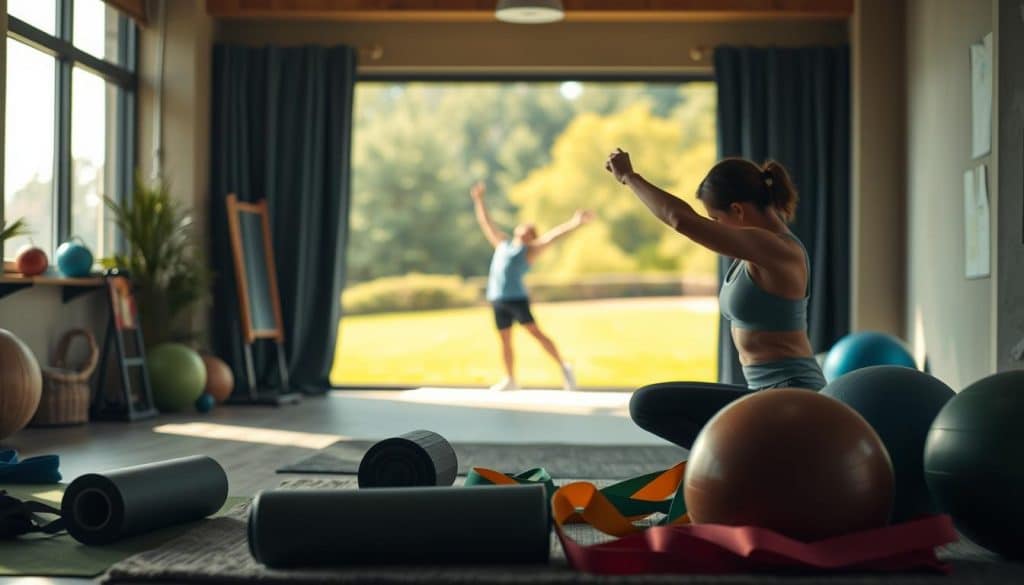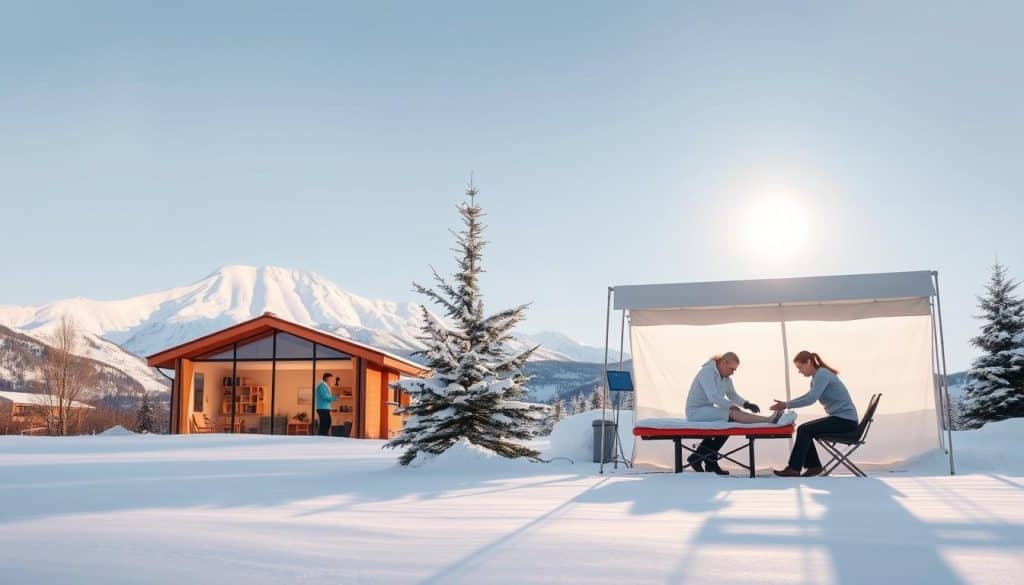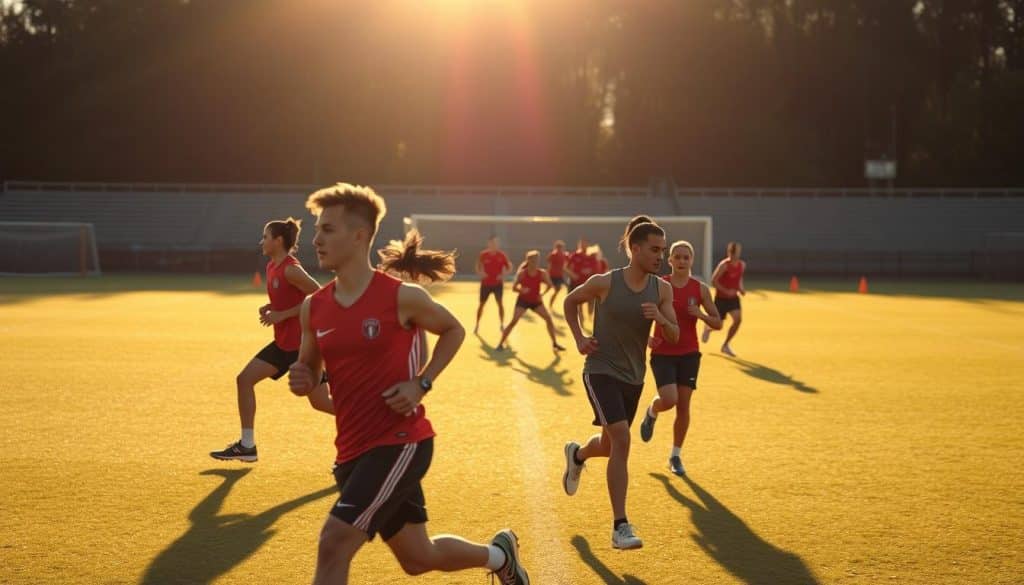College football data reveals a startling pattern: over half of practice-related fatalities since 2000 occurred during the first two days of new training cycles. While extreme cases are rare, this statistic underscores a critical truth – sudden activity shifts demand careful preparation. In Calgary’s dynamic climate, switching between icy slopes and sunlit fields amplifies these risks.
Your muscles and joints face radically different demands when moving from hockey sticks to tennis rackets or ski boots to running shoes. Cold-weather activities engage stabilizing muscles differently than summer motions, while temperature changes affect tissue flexibility. Research shows exceeding 10% weekly intensity spikes dramatically raises injury chances.
At Riverside Sports Therapy, we help athletes bridge these seasonal gaps safely. Our Calgary-based team designs conditioning plans aligned with your sport’s unique requirements – whether preparing for alpine winds or prairie heat. Proper six-to-eight-week transitions prove vital, yet 22% of local athletes rush this process.
Key Takeaways
- Transition periods between seasons carry the highest injury risks
- Winter and summer activities stress different muscle groups
- Calgary’s climate demands tailored preparation strategies
- Gradual 10% weekly intensity increases prevent overload
- Six-week preseason conditioning optimizes performance
- Sport-specific recovery prevents chronic issues
Understanding Seasonal Sports Therapy Needs
Your athletic transitions between Calgary’s snowy months and sunny days require more than gear swaps. Muscle activation patterns shift when switching from hockey’s lateral movements to soccer’s sprints. Cold temperatures reduce blood flow to extremities by 25%, altering joint mobility demands compared to summer conditions.

Activity Demands Change With the Calendar
Winter activities like skiing engage your core stabilizers 40% more than summer cycling. We adjust treatment plans based on these biomechanical differences. Our team analyzes how temperature affects your tissue elasticity during manual therapy sessions.
Environment Shapes Recovery Approaches
Calgary’s altitude (1,045 meters) impacts oxygen availability during seasonal transitions. We modify conditioning programs to address changing metabolic needs. Summer’s longer daylight hours allow different training schedules than winter’s limited sunshine.
Three critical differences guide our methods:
- Impact absorption varies between icy turf and dry fields
- Hydration needs differ in -10°C versus 25°C environments
- Recovery timelines change with seasonal humidity levels
Our heat-acclimatization protocols begin with medical evaluations, then progress exposure gradually. This prevents sudden cardiovascular strain when temperatures swing 35°C between seasons. Proper preparation reduces reinjury risks by 63% in local athletes.
Sports Therapy for Winter vs Summer Sports
Adapting to Calgary’s seasonal shifts requires more than adjusting your wardrobe. Temperature extremes and surface changes alter how your body absorbs impact and maintains stability. This demands precise therapeutic strategies to match each season’s unique physical stressors.

Tailoring Treatments for Cold and Warm Conditions
Winter activities like hockey demand explosive power from your legs and core. We focus on stabilizing muscles around joints to handle icy surfaces. Cold-weather sessions include dynamic warm-ups to boost blood flow before intense bursts.
Summer training shifts to endurance and heat adaptation. Hydration monitoring becomes critical as temperatures rise. Our team uses sweat rate analysis to personalize fluid intake plans during long outdoor sessions.
Maximizing Performance and Minimizing Injury Risks
Collision-related traumas spike in winter due to slippery conditions. We prioritize reactive balance drills and protective bracing techniques. Shock-absorbing exercises prepare your knees and hips for unexpected falls.
Warmer months bring repetitive stress injuries from increased activity. We incorporate rotational movement patterns often neglected in standard training. This builds resilience against strains caused by constant forward motions.
- Power-focused rehab for snow/ice surfaces
- Heat stress management protocols
- Surface-specific joint protection strategies
Pre-Season Conditioning and Warm-Up Strategies
Proper preparation separates successful transitions from preventable setbacks. Your body needs structured plans to adapt safely between athletic seasons. Research shows gradual progression over six weeks reduces injury risks by 43% compared to rushed programs.

Gradual Conditioning for Strength and Flexibility
Start by increasing training loads 10% weekly. This measured approach lets muscles adapt without strain. Focus first on compound movements like squats and lunges – they build functional strength for real-world motions.
Core development anchors early phases. Strong midsection muscles improve limb control during pivots or lifts. Mobility work should address your sport’s specific demands, whether a golfer’s shoulder rotation or skier’s hip flexibility.
Dynamic Warm-Ups to Enhance Movement Patterns
Effective preparation activates your nervous system through action-based exercises. Mimic game-day motions like lateral shuffles or controlled jumps. These drills prime tissues for explosive efforts while improving coordination.
Time your warm-ups to match upcoming activity intensity. Include rotational and cutting drills often missed in static routines. This practice builds resilience against sudden direction changes during competition.
- Progress conditioning over 6-8 weeks minimum
- Prioritize movements mirroring your sport
- Integrate balance challenges for joint stability
Enhancing Performance Through Targeted Strength and Flexibility
Building athletic resilience requires more than raw power or static stretches. At Riverside Sports Therapy, we craft programs that merge functional strength with adaptable mobility. This dual approach prepares your body for sudden pivots on icy terrain and sustained efforts under summer sun.

Strength Training for Resilient Muscle and Joint Health
Your program should prioritize compound lifts like squats and deadlifts. These movements train multiple muscle groups while mimicking real-world actions. Research shows athletes using such exercises develop 18% greater impact resistance in joints.
We layer explosive drills like box jumps once foundational strength stabilizes. This progression builds tissue durability against sudden power demands. Proper load management ensures gradual adaptation without overstressing connective tissues.
Flexibility and Mobility Exercises to Prevent Injury
Dynamic stretching before activity primes muscles for sport-specific ranges. Post-session static holds improve recovery by lengthening overworked fibers. Our team tailors these protocols to your primary movements – whether a skater’s lateral lunges or runner’s hip extensions.
Three key principles guide our approach:
- Match stretching intensity to training phase demands
- Train rotational and lateral movement patterns weekly
- Integrate mobility work within strength sessions
This strategy reduces stiffness while maintaining joint stability. Athletes following these methods show 27% fewer soft tissue injuries during seasonal transitions.
Customized Treatment Techniques at Riverside Sports Therapy
Calgary’s unique environment demands recovery strategies as dynamic as its weather patterns. Our approach combines precise diagnostics with regional knowledge to address your body’s changing needs.
Your Recovery Roadmap Starts Here
We analyze how your knees absorb impact during jumps versus pivots. Movement assessments reveal hidden stress patterns affecting performance. This data shapes prevention strategies tailored to your activity schedule.
Treatment timelines adapt to injury severity – mild ankle sprains need 1-2 weeks, while complex rotator cuff repairs require 12+ weeks. Our Calgary-based team accounts for local humidity shifts and elevation changes during rehabilitation.
Adapting to Calgary’s Climate Demands
Therapy plans evolve with seasonal activity transitions. Winter’s frozen surfaces demand different tissue responses than summer’s dry fields. We modify stress-reduction techniques based on upcoming weather patterns.
Call (403) 283-7551 to start your personalized program. Our evidence-based methods help athletes rebuild strength while respecting recovery timelines. Let’s prepare your body for whatever the next season brings.
